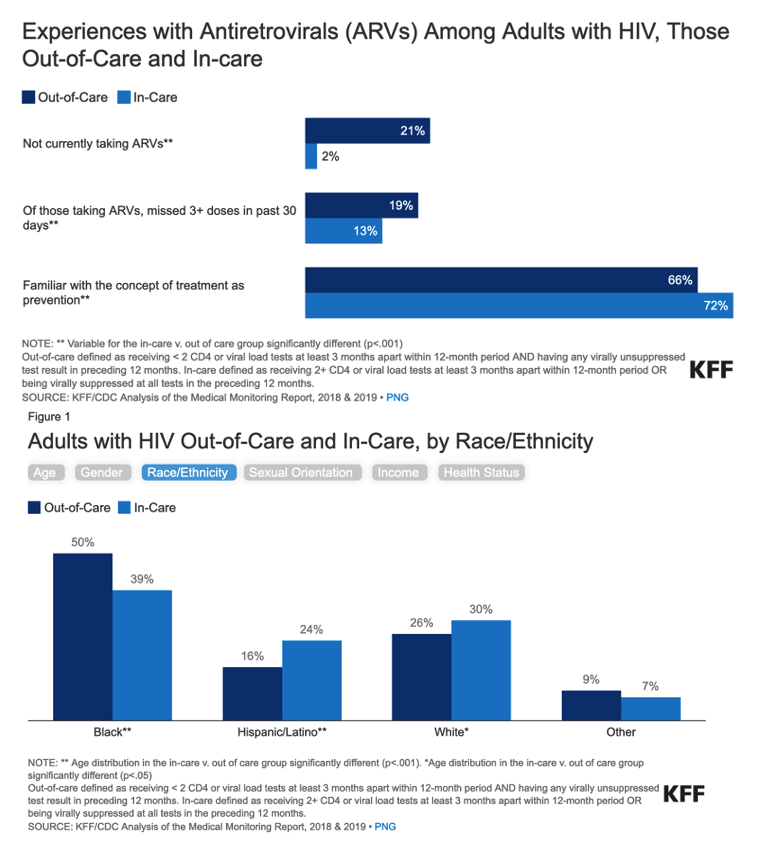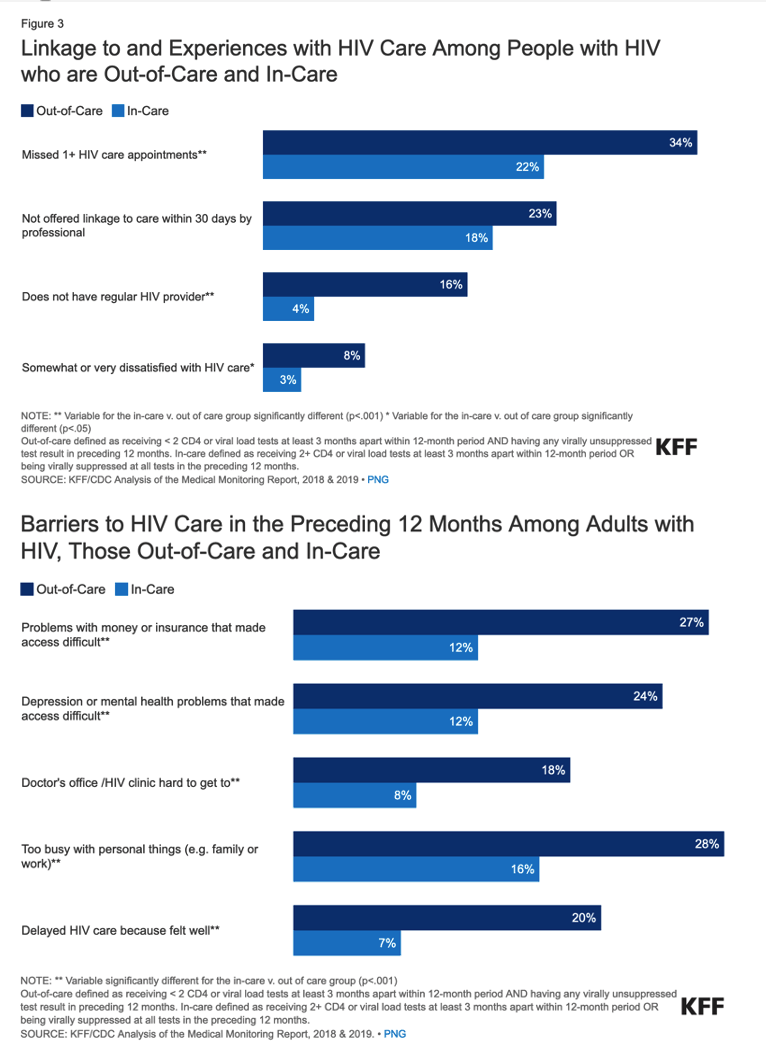| |
21% of adults with diagnosed HIV were out-of-care
|
| |
| |
Published: Jun 22, 2023
https://www.kff.org/hivaids/issue-brief/what-do-we-know-about-people-with-hiv-who-are-not-engaged-in-regular-hiv-care/
This analysis aims to help fill this gap, using nationally representative data to assess the characteristics and experiences of people with HIV who are out of regular HIV care, defined as those who had less than two CD41. or viral load tests at least 3 months apart within a 12-month period and were not virally suppressed.
Overall, we find that one-in-five (21%) adults with diagnosed HIV were out-of-care and, compared to their in-care counterparts, they were more likely to report challenges in their interactions with the health system, multiple and complex barriers to access, and unmet needs for ancillary care; they are also more likely to be members of population groups already facing longstanding health disparities. Specifically, we find that:
• People with HIV who were out-of-care were more likely to be Black, young, and to report poorer health status than those in-care. They were also more likely to be uninsured, experience changes in their usual source of care related to insurance changes, and were less likely to have a regular provider or to receive support from the Ryan White Program. There were no statistically significant differences based on state Medicaid expansion status or census region.
• Those out-of-care were more likely to report barriers to care engagement, including in the areas of finances, mental health, and getting to a doctor’s office, as well as more dissatisfaction with care than those in-care. They were also more likely to report unmet needs for ancillary social and support services in three domains: clinical, non-HIV medical/behavioral, and subsistence services, with more than half reporting at least one unmet need.
• Whereas virtually all people with HIV in-care were on antiretroviral therapy, a fifth of those out-of- care were not on ARVs, and among those who were, they were more likely to report missing treatment doses. In addition, smaller shares reported being familiar with the concept of treatment as prevention
(TasP) than those in-care, though there were substantial knowledge gaps for both groups.
• Identifying people with HIV who are out-of-care, and better understanding the barriers they face, are first steps towards engaging or reengaging them in-care, addressing their unmet needs, and improving their health status. Doing so could play a role in advancing the goals in the national HIV/AIDS Strategy
and the federal Ending the HIV initiative.


|
|
| |
| |
|
|
|